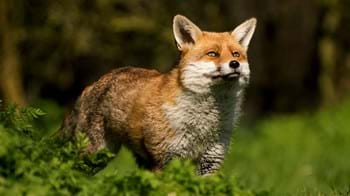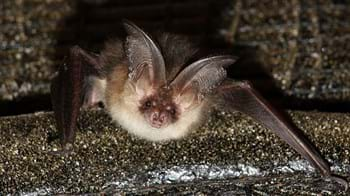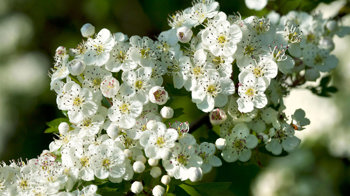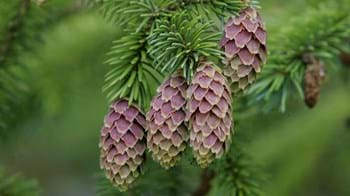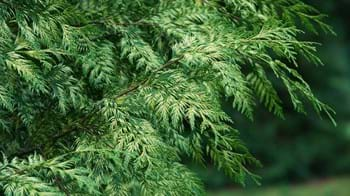
Butterdean Wood
Gladsmuir Haddington

Woodland Trust wood
42.15 ha (104.15 acres)
NT456721
Explorer 351
OS Landranger 66
Butterdean Wood is a charming and rare remnant of plantation woodland being restored to native woodland - a precious place for native trees to thrive in an otherwise agricultural landscape.
There are more than 5km of paths to explore, with two waymarked trails and several wildlife-themed sculptures to find. Keep an eye out as you walk for the unusual bird's nest orchid, which grows from the roots of trees during summer, and listen for the laughing call of the green woodpecker among plentiful birdsong.
Features
- Parking nearby
- Public access
- Autumn colour
- Spring flowers
- Waymarked walk
How to get to Butterdean Wood
Butterdean Wood is situated in East Lothian, less than 1km south of the village of Gladsmuir between Tranent and Haddington. Located within 1 mile of the A1, there are excellent links to Edinburgh and the towns and villages of Mid and East Lothian.
There is easy access to Butterdean Wood from Edinburgh. Exit the A1 onto the A199 at Gladsmuir. Follow the brown tourist sign marked Butterdean Wood and head south down the unclassified road from Gladsmuir to Liberty Hall. Car parking is around 750m down this road on the right hand side.
The nearest train station is Longniddry around 3 miles from the wood (around a 7 minute drive).
The nearest bus stop is located at Gladsmuir Farmhouse on the A199. The entrance to the wood is approximately a 5 minute walk away following the unclassified road from Gladsmuir to Liberty Hall.
Facilities and access
There are six formal entrances from which the wood can be accessed; these entrances are either open squeeze gates or field gates.
The main entrance is from the East Lothian Council owned car park at the northern end of the wood.
The wood is largely flat with over 5km of managed paths to follow. There are two waymarked trails; the longer of the routes is unsurfaced with the shorter trail a multi-use surfaced route. There are also many unsurfaced informal routes to be explored.
The unsurfaced routes through the wood can become wet and muddy after periods of rain. There are also several sleeper bridges which cross drainage ditches along the main paths.
There is no Woodland Trust car park on site, however parking is available at the ELC car park at the northern end of the wood where there is capacity for around 12 vehicles. The car park is located just off the unclassified road from Gladsmuir to Liberty Hall around 750 metres south of the A199 at Gladsmuir.
There are public conveniences with disabled access located in both nearby Tranent and Haddington.
Wildlife and habitats
Animals
Butterdean Wood provides a diverse habitat which supports a number of locally uncommon species. The scarce hornet clearwing moth can be found here, a day-flying moth which is notoriously hard to spot and, as the name suggests, mimics a hornet to deter would-be predators. Keep an eye out for it low down on tree trunks in early to mid-morning.
Butterdean is also a great place to birdwatch. Look out for willow warbler, whitethroat, redpoll and linnet, as well as locally uncommon species such as green woodpecker and nuthatch.
Trees, plants and fungi
Butterdean Wood is an attractive mixed woodland of conifers, ash, birch and other broadleaves. It has been wooded for centuries but has a complex history, having been felled and regenerated on several occasions. The wood has never been entirely clear felled however, and as a result there are many veteran trees remaining scattered throughout the wood.
There are a number of interesting plant species here too. In particular, look out for the unusual bird's nest orchid which looks like something from an alien world. Unlike other green plants it can’t photosynthesize. Instead it grows as a parasite on tree roots between May and July.
Honeysuckle is also prolific in places, and in spring you might spot the delicate white flowers of wood sorrel among the trees.
Habitats
Butterdean Wood is predominantly broadleaved woodland, a relatively rare habitat locally within East Lothian. The chequered history of the site means that there are a number of different woodland types present on site.
The wood is also bordered by agricultural land on three sides which results in a significant amount of woodland edge habitat. This edge habitat is important to a wide range of wildlife and provides a transition zone for species diversity.
About Butterdean Wood
Acquisition
Butterdean Wood was purchased by the Woodland Trust with help from the East Lothian District Council in 1988.
History
The wood has an interesting heritage. It is thought to have been intermittently forested since before the 14th and 15th centuries when much of the local woodland including Butterdean was cleared for fuel, timber or increasing grazing land.
By 1799 it is known that Butterdean was wooded again, although this was followed by more periods of felling until 1946 when the last saleable timber on site was removed by the Forestry Commission shortly after they purchased the wood. The wood was then replanted again between 1966-68.
In 1982 a farmer purchased the wood and requested to fell it once again for agricultural use. This resulted in the woodland being placed under a Tree Preservation Order.
Butterdean House
Butterdean House once stood within the wood. The first mention of it is in 1850, when ‘it was resolved that a hospital should be established for the reception of poor, sick and strangers during the harvest.’ Sadly there are no visible remains of the house today and little is known about it.
Industry
Eight mineshafts once used for coal mining (now capped and fenced off) are present in the western section of the wood. There are also the remains of several brick structures near the western entrance, thought to have been ancillary storage areas and possibly an air raid shelter associated with the nearby WWI Penston military air field.
Things to do at Butterdean Wood
Walks
There are two waymarked trails to follow in the wood, plus a series of wildlife-themed sculptures to find.































